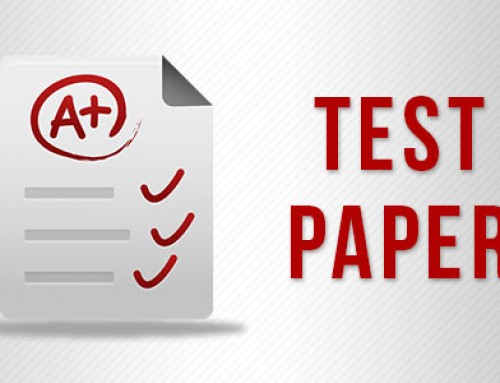In last lecture we were dealing, we were discussing about the position vectors. Let us consider a point at certain coordinates x, y and z. And then the position of A point with respect to origin is defined as x coordinate i cap, y coordinate j cap and z coordinate k cap. This is position vector with respect to origin.
Similarly using the same idea we can define displacement vector which we are going to use in kinematics. Displacement is, let’s say the particle is initially at point A, the initial point, having the coordinate x1, y1, z1. So the initial position of the particle can be written as x1 icap, y1 j cap and z1 k cap. Particle will move from point A to point B in any path. So B must be the final part of the particle. So this will represent the position of the final point with respect to origin and that will be x2 i cap, y2 j cap and z2 k cap.
But a vector from A to B, a vector from the initial point to the final point will be the displacement vector. Position vector of final point with respect to initial point or from initial point will be defined as the displacement vector.
Now we have three vectors, 1, 2 and 3. By using the triangle of vector addition we can say that out of these vectors, r final is the resultant one, or r final is the vector summation of these two vectors. So we will put it like that r initial vector plus displacement vector is equal to r final vector. So D can be written as final position vector minus initial position vector will be defined as the displacement vector. So finally it will come out to be x2 minus x1 icap, y2 minus y1 j cap, Z2 minus z1 k cap. So this is the displacement vector of the particle. And then we use the same idea to calculate work done by force in this particular problem.
Particle is moving under the effect of this given force. It starts its motion from this initial position vector to this final position vector. Work done is defined as the dot product of force under displacement. So first let us calculate the displacement vector from these two. That displacement vector will be written as the final position vector minus initial position vector, okay. So x2 minus x1 i cap, y2 minus y1 j cap, z2 minus z1 k cap. So, the displacement is i cap to j cap plus k cap. So this is our displacement vector, okay, this is how we define the displacement vector. And now we want to calculate the work done by force, so work done by force will be the dot product of force with the displacement. We know that if the vectors are written in terms of i, j, k, the dot product is Ax, Bx, Ay, By, Az, Bz. Ax, Bx 1 into 6 plus Ay, By 4 into 2, plus Az, Bz 2 into 1. So finally it will be 6 plus 8 plus 2 so it will be 16. So what is the unit of work, it is Joules. So total work done by this particular force is equal to 16 Joules. Any doubt? So this how we define the work done.
See it is an application of dot product only, what was the learning point in this problem, you should know by this particular example you should able to see how to write position vector, how to write displacement vector and just the dot products of force and displacement. You are not supposed to know this particular formula, right now even if you do not know that work done is F dot D that is perfectly alright. Because whenever that kind of problem will come into the picture we will give you the formula that work done is force dot product with the displacement.
Let’s take one more good example based on the application of dot product that we have already seen. A particle is moving under the effect of the given force vector and having the given velocity vector at any time T. Here is the force vector and here is the velocity vector. A particle is moving because of this particular force. And at certain time of its motion its velocity vector was this one. Then find the power given by the force then find the power delivered or given by the force if the power is defined as F dot V. So power at certain instant, the instantaneous power is defined as F dot V. So you are not supposed to know this particular formula right now but you should know how to use the dot product. So the purpose of this particular problem is to allow yourself to do some practice on the dot product. So if with force velocity you do dot product then you will get power, so power will be, we know that. Ax Bx plus Ay By. It will be 14. So what is the unit, either Joule per second or watt. Power delivered by this particular force is, okay, any doubt.
Let’s see one more good problem on the application of dot product.
Let’s say I am defining a vector A, something like that, and I am asking you find the angle made by this vector with x axis, y axis and z axis, straightforward you should get this result in your mind. What will be the angle made with…….








